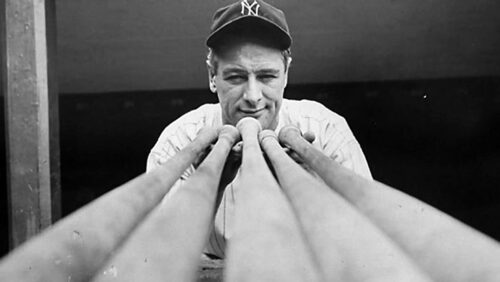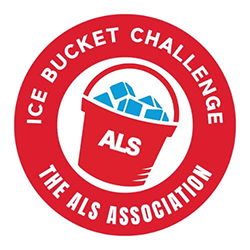Lou Gehrig and the History of ALS

The disease was identified in 1869 by French neurologist Jean-Martin Charcot and became more widely known internationally on June 2, 1941, when it ended the career of one of baseball’s most beloved players, Lou Gehrig. For many years, ALS was commonly known as Lou Gehrig’s disease.
Gehrig played with the New York Yankees for 17 years and received the moniker “The Iron Horse” due to his ability to play baseball despite suffering from a variety of injuries.
Born in New York City to the son of German immigrants, Heinrich and Christina Gehrig, Gehrig attended Columbia University on a football scholarship to study engineering, yet he also played the sport for which he is best known during his tenure at the Ivy League school.
A baseball scout signed Gehrig to the Yankees in 1923 due to his remarkable hitting skills. He held various positions on the team until his retirement, including shortstop and outfielder; however, many know him best as the Yankees’ first baseman.
Gehrig garnered many achievements in his career. He hit 493 home runs; held the record for most grand slams in a career (23) until 2013; and established a record for playing 2,130 consecutive professional baseball games. The Yankees also made him the first athlete to have a jersey number retired.
Gehrig was diagnosed with ALS on his 36th birthday during a visit with his wife Eleanor to the Mayo Clinic in Rochester, Minnesota, on June 19, 1939. Prior to his diagnosis, Gehrig noticed several of the disease’s symptoms while playing on the field, including a loss of strength, slipping, falling and loss of coordination.
[source]The ALS Ice Bucket Challenge
 In the summer of 2014, three young men living with ALS, Anthony Senerchia, Pete Frates, and Pat Quinn, took the ALS Ice Bucket Challenge and launched a global phenomenon that changed the fight against ALS forever.
In the summer of 2014, three young men living with ALS, Anthony Senerchia, Pete Frates, and Pat Quinn, took the ALS Ice Bucket Challenge and launched a global phenomenon that changed the fight against ALS forever.
They inspired over 17 million people around the world to dump ice water on their heads and donate to an ALS organization. The Challenge raised awareness of the disease worldwide and raised $115 million to support our mission, funds that were invested in ALS research and care for people living with the disease.
Take the ALS Ice Bucket Challenge »
Hospice Care for ALS Patients
Angels Grace Hospice & Palliative Care of Illinois provides specialized end-of-life hospice care for patients with terminal illnesses, including Amyotrophic Lateral Sclerosis (ALS), also known as Lou Gehrig’s Disease.*
 Recognizing the complex and progressive nature of ALS, hospice care offers comprehensive services aimed at managing symptoms and enhancing the quality of life for both patients and their families. Your hospice team of physicians and nurses, specialize in comfort care, and develop a personalized care plan tailored to each patient’s unique needs.
Recognizing the complex and progressive nature of ALS, hospice care offers comprehensive services aimed at managing symptoms and enhancing the quality of life for both patients and their families. Your hospice team of physicians and nurses, specialize in comfort care, and develop a personalized care plan tailored to each patient’s unique needs.
Eligibility for hospice care at Angels Grace Hospice & Palliative Care requires a physician’s order for an evaluation by their specialized team. This evaluation can take place in various settings, including hospitals, the patient’s home, assisted living facilities, or nursing homes, ensuring accessibility and convenience for the patient. A complete evaluation of symptoms and diagnoses is required to determine eligibility, with ALS being one of the primary conditions qualifying for their services.
By focusing on comfort and dignity, Angels Grace Hospice can help ALS patients live their remaining days to the fullest. Our approach includes managing pain and other distressing symptoms, providing emotional and spiritual support, and assisting families with the challenges that come with end-of-life care. This holistic care model ensures that patients receive compassionate support tailored to their individual circumstances, promoting a sense of peace and quality of life during this critical time.
. . . .
*ALS (Amyotrophic Lateral Sclerosis), also known as Lou Gehrig’s Disease, is a progressive neurodegenerative disease that affects nerve cells in the brain and spinal cord. It leads to the gradual loss of muscle control, making it difficult for patients to move, speak, swallow, and eventually breathe.
The disease occurs when motor neurons, which are responsible for sending signals from the brain to the muscles, deteriorate and die. As a result, muscles weaken and waste away, leading to paralysis. However, cognitive functions usually remain intact, meaning patients are fully aware of their condition as it progresses.
There is no cure for ALS, and its exact cause is not fully understood. Most cases occur sporadically, but some are inherited. Treatment focuses on managing symptoms, slowing progression, and improving quality of life through medications, therapy, and supportive care like hospice services.


